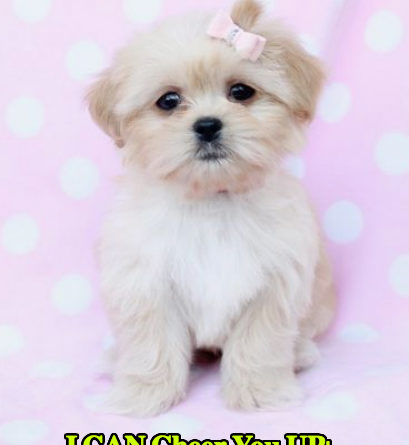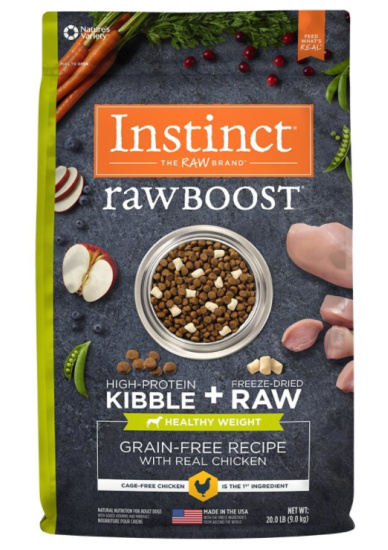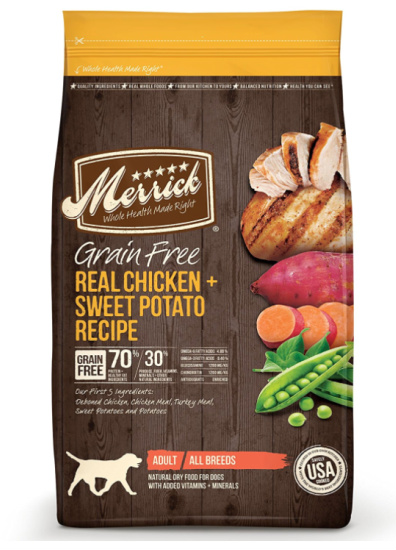Peekapoo Dog Breed Temperament Diet Training
A mix of Chinese charm and French elegance. That’s the adorable little Peekapoo.
This little crossbreed has the best traits of both its parents. It’s also inherited their good looks. If you wish to welcome it into your home, you could use a few tips on how to care for it.
1. What is the Peekapoo?
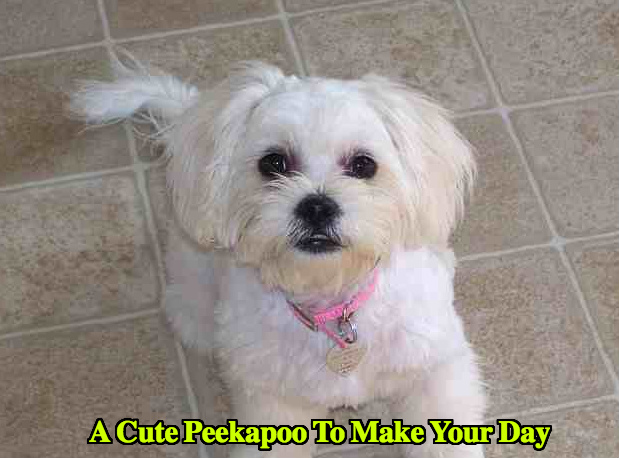
The Peekapoo is a cross between the Pekingese, the Chinese national dog, and the French Poodle. This fellow is easy to train because it has its poodle parents’ intelligence. The Peekapoo lives for about 15 years. Pure breed registries don’t recognize it yet.
The Peekapoo is one of the earliest designer dog breeds. It dates back more than 60 years. Because it has Poodle ancestry, its coat is curly. It’s one of the most popular crossbreeds today; Poodle mixes are always well received.
Peekapoos are almost always first generation crossbreeds of the Pekingese and the Poodle. Multi-generational breeding between Peekapoos themselves is rare.
2. Peekapoo history
a. The Peekapoo
Unlike the Labradoodle or the Goldendoodle, the Peekapoo is one of the oldest Poodle crossbreeds. Breeders developed it in the 1950s as a solution for pet lovers with allergies.
This dog hasn’t gained the recognition of official kennel clubs. As such, we don’t have much knowledge of its history. However, we do know a fair bit about its parents.
b. The Pekingese
Known as the ‘lion dog’ in Mandarin, the Pekingese is an ancient breed that originated in China. It earned its name because of its resemblance to Chinese Guardian Lions. This majestic fellow was a favorite of the Chinese royalty in the forbidden city.
Recent analyses of its DNA show that it is one of the oldest dog breeds in the world. It had such premium value that only members of the Royal Family could own it.
In 1860, the Xianfeng emperor fled to Chengde because French and British troops had occupied the old Summer Palace in Beijing. However, not all of his court accompanied him. He left behind an aunt, whom the allied soldiers had found with five Pekingese dogs. The allies removed these pets.
Lord John Hay took a pair of these Pekingese and gave them to his sister, The Duchess of Wellington. Sir George Fitzroy also gave two to his cousins the Duke and Duchess of Richmond. Also, Lieutenant Dunne presented the fifth one to Queen Victoria, a well-known dog lover who named it Looly.
Therefore, the Pekingese was once a diplomat. Empress dowager Cixi presented it as a gift to the Americans, including John Pierpoint Morgan and Alice Lee Roosevelt Longworth, President Theodore Roosevelt’s daughter.
The lion dog became popular in Western countries. Queen Alexandra of Denmark, the wife of King Edward VII owned Pekingese dogs.
The Sleeve or miniature Pekingese is the most popular type of lion dog. It derived its name because members of the Chinese Imperial household carried them in their sleeves. It applied to dogs no more than 7 lbs in weight. Miniatures sometimes appeared in litters of full-sized Pekingese. They had a strong following in Europe.
c. The Poodle
This elegant fellow is one of a group of formal dog breeds that includes the Standard Poodle, Toy Poodle, and the Miniature Poodle. These days, Poodles are as small as teacups. Of course, we have the minute, and cute, Teacup Poodle.
The origin of the breed is still in question. People debate over whether it comes from Germany. Besides its well-honed appearance, this beautiful creature excels in agility and show events.
The Kennel Club of the United Kingdom maintains that it originates from Germany. The American Kennel Club disputes this, saying that it comes from France, where it was a duck hunter. ‘Poodle’ is a derivative of the German word Pudel, which means to splash around.
The Fédération Cynologique Internationale, which oversees French and German Kennel Clubs, claims that it descends from the French Barbet. Breeders may have crossed it with the Hungarian Puli. After some debate, members of the CFI recognized it as coming from France. They named the dog Caniche in French because of its ability to swim.
Indeed, Europe had known about the Poodle long before it arrived in England. German artist Albrecht Durer captured its image in the 15th and 16th centuries, as did Spanish artist Francisco de Goya.
The popularity of the Poodle remains unchallenged. It has contributed to many crossbreeds, including the Labradoodle, the Goldendoodle, the Cavoodle, and of course, the Peekapoo. Some pure breeds, like the Schnauzer, should thank it for their lineage as well.
3. Peekapoo Appearance
Peekapoos, like other hybrids, can vary in appearance. How it looks depends on which parent it takes after.
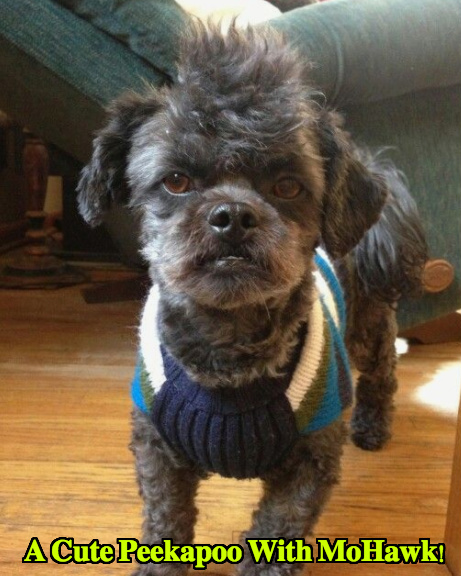
a. Height and Weight
The Peekapoo is a small dog that weighs no more than 9 kg. It stands at about 11 inches. Either the toy or miniature poodle can parents it, which explains why its weight varies from one dog to another. The Peekapoo has delicate bones and is long-legged when compared with the Pekingese.
b. Nose
A Peekapoo can have a brown or black nose. However, it may have a liver-colored nose if it has inherited the characteristic of an Amber Poodle.
c. Eyes
A large number of Peekapoos have brown or Hazel eyes. Some Poodles have gray eyes, so their Peekapoo descendants would have them as well.
d. Coat colors
The Peekapoo has a medium-length coat. Common colors are:
- • White
- • Cream
- • Silver
- • Black
- • Apricot
- • Chocolate
- • Red
It has soft hair that needs regular brushing. Look out for advice on how to keep your Peekapoo well-styled in the section on grooming.
Ears
The Peekapoo’s ears are somewhat soft and droopy. You will need to pluck out the fine hairs from within regularly. You may also shave them off.
4. Peekapoo Temperament
A dog’s temperament should be a pet owner’s top consideration. Ideally, it should be obedient, yet have a mind of its own. It should be calm as well. So, does the Peekapoo meet these standards? Its’ parents’ tempers will offer insight into its own.

a. Pekingese characteristics
The Pekingese, having been presented as a gift to royalty, has a noble bearing. It still has this regal air today. This dog can be a little standoffish and expect its owner to treat it like a helpless lap dog.
According to the standard for the breed set by the American Kennel Club, the Pekingese should be courageous, bold, and have healthy self-esteem. It is an excellent companion for someone who has the time to pay full attention to it. This dog doesn’t suit families with small children because it may not be able to tolerate any breach of its boundaries.
The Pekingese is an alert dog. It is watchful over its family members and is wary of strangers. It makes an excellent guardian.
The Pekingese is notoriously difficult to train. It is dominant and believes that it is in charge of the home. This wilfulness can make training sessions challenging. Besides, it requires plenty of positive reinforcement.
This dog is generally well-behaved but may bark quite a bit. It is easy to bring it with you to different places because it is tiny. You can carry it about with you in a big purse.
In all, with a little socialization, the Pekingese can be an excellent companion. Being around other people and their pets will teach it proper manners.
b. Poodle characteristics
The Peekapoo’s other parent and the Pekingese’s French counterpart, the Poodle, also has a dignified demeanor. Its elegance surpasses that of many other dogs.
For this reason, people have the misconception that Poodles are sissies. This myth is, by far, one of dogdom’s most untrue.
Like many other dogs, the Poodle was, and in many circumstances still is or working breed. It isn’t only efficient in the show ring; people still use it for hunting and retrieving game. The Poodle, despite its formal and somewhat pampered outlook, is a resilient creature.
It is a miniature athlete. It excels in showings and agility competitions not only because it looks handsome; it is disciplined. It overcomes and goes through obstacles with immense strength and grace.
The Poodle is renowned for its intelligence. It pays full attention to its owner and learns very quickly. Positive training will elicit a fast response. Note that it is
a quick learner and can anticipate your intentions.
The Poodle makes an excellent watchdog. It will give a sharp bark when someone’s at the door and is reserved with strangers. Overall, it is sociable and accepting.
Some Poodles tend to be quite highly-strung and may exhibit neurotic behavior (e.g., tail chasing, chewing). Early socialization will overcome this issue.
c. The Peekapoo
So, with the characteristics inherited from its parents, what kind of temperament does the Peekapoo have?
Like both of its parents, the Peekapoo is a gentle and affectionate creature. It has inherited the Poodle’s intelligent and alertness, so it is quick to investigate its surroundings. It is also extremely loyal.
Because it has Pekingese heritage, it may be somewhat defensive. Supervise it when it is in the company of children because it may not enjoy excessive teasing.
The Peekapoo is smart but can be stubborn, much like its Pekingese parent. Positive reinforcement during training is a necessity.
5. Peekapoo Health Concerns
The Peekapoo, like other crossbreeds, is generally healthy. However, it may inherit health conditions from either of its parents.

a.Brachycephalic Airway Syndrome
Because of its Pekingese heritage, the Peekapoo may be short-nosed. A short nose makes the dog susceptible to a condition known as Brachycephalic Syndrome. Dogs with flat faces, such as the bulldog, Shih Tzu, French Terrier, Boxer, and yes, the Pekingnese, are prone to this condition.
The brachycephalic syndrome is a set of anatomic defects that may limit breathing. A shortened muzzle, elongated soft palate, and underdeveloped trachea may contribute to this condition.
A dog prone to Brachycephalic syndrome may develop heatstroke. It’s essential to hose it down regularly.
Furthermore, never leave your Peekapoo alone in a heated car. Roll your windows down a third of the way for air to enter.
b. Collapsed Trachea
A defect in the primary structure of the dog’s airway may cause it to collapse. A collapsed trachea creates pressure when the dog breathes, causing it to pant. This condition is distinct from Brachycephalic Syndrome, the respiratory disorder described above. The Peekapoo may inherit his tendency from its Pekingnese parent.
c. Dental Disease
Peekapoos with delicate jaws may become prone to Periodontal Disease and other dental conditions.
Regular brushing is necessary to keep your Peekapoo’s teeth in top condition. Don’t use the toothpaste that you usually do, as dogs are allergic to fluoride. Use toothpaste for dogs instead.
Be gentle when you brush your dog’s teeth. If your dog is new to brushing, ease it into the process. Use your finger instead of a toothbrush for a start. Put some toothpaste on it, and rub your finger gently on your dog’s teeth. Use a toothbrush when it becomes used to being handled.
d. Hemolytic anemia
Hemolytic anemia, an autoimmune condition happens when white blood cells attack the red ones and break them down. These damaged cells severely reduce the bloodstream’s oxygen-carrying capacity and hence, your dog’s breathing. It may also cause the dog to become lethargic, and in a critical situation, collapse.
e. Keratoconjunctivitis Sicca
Keratoconjunctivitis Sicca is another autoimmune condition that results in the decreased production of tears. It causes the dog to have a ‘dry eye.’ The dryness can cause considerable discomfort and recurring infections. In severe cases, Keratoconjunctivitis may even damage the eye.
f. Patella luxation
Patellar luxation refers to a dislocated patella or kneecap and is common in many dog breeds. It causes the dog to limp on both hind legs. Veterinarians usually turn to surgery to correct this condition.
g. Progressive Retinal Atrophy
A dog experiences PRA when the nerve cells in the eye degenerate. As expected, this causes vision loss, which happens over time. This condition may cause blindness if left unchecked.
PRA is an inherited disorder, so we recommend that you have your veterinarian evaluate your dog for propensity to the condition.
h. Von Willebrand’s Disease
Von Willebrand’s Disease causes a dog to bleed rather profusely because of platelet malfunction. In some dogs, it is only detectable after sterilization.
6. Peekapoo Grooming
Grooming keeps your Peekapoo neat and healthy. A well-groomed dog is a conversation starter and is less prone to illnesses. So, how do you maintain your Peekapoo’s soft coat?

a. Brushing
A Peekapoo’s coat requires daily brushing to look tidy and glossy. Since it has a medium-length coat, a slicker brush is best for this task. It moves through the dense hairs thoroughly. You can comb it weekly if you keep its nails clipped short.
b. Bathing
The Peekapoo is a hypoallergenic breed and needs bathing about once a month. If you live an active lifestyle, do so more often. Avoid excessive bathing because that would remove healthy oils from the skin. Since this dog has delicate hairs, a conditioner may be useful.
c. Brushing
You should brush your dog’s teeth twice daily as you would do yours. Dogs are susceptible to diseases like we are. Brushing plays a part in removing them.
The Peekapoo has soft hair which often gets tangled. Use a detangling brush to remove mats.
d. Face
Your Peekapoo’s face will require cleaning as well. Wipe between the folds of its mouth with a wet cloth. Do this after every meal as food tends to get caught in them.
e. Rump
Clean your Peekapoos rump and rectum, once every three weeks. Feces may get caught in the hairs, which can cause blockages and infections. Regular cleaning reduces bacteria.
f. Using Clippers
Clip your Peekapoo’s hair every three weeks, using a clipper designed to trim dog hair. Human clippers may not cut the hair all the way through. Get someone to hold your pup while you do your work. Use a clipper for dogs with medium-length hair.
g. Grooming Scissors
Use grooming scissors to cut the hair around its eyes, mouth, nose, and ears. Be careful when cutting the hair around these areas because carelessness may result in damage to these sensitive areas.
h. Nail Cutting
This process can be an uncomfortable one for a dog that hasn’t had its nails cut before. To begin, massage your dog’s paws. Your pet will grow used to you touching it.
Then, cut off the nails. Avoid cutting into the quick, the pinkish area beneath the nail enamel, as that would cause profuse bleeding. Repeat this process at least once every ten weeks.
i. Ear Cleaning
The Peekapoo has floppy ears, and tiny hairs may grow inside them. You will need to clear the wax within regularly and pluck these out.
Fold the ears back and begin cleaning the outer ear. Then, proceed to pluck the little hairs. Clean the pina, or inner ear, using an ear solution for dogs.
j. Eye Cleaning
Cleaning your dog’s eyes is essential as well. Peekapoos, with their Poodle and Pekingnese heritages, tend to have tear stains.
Dip a cotton swab in eye solution. Use it to wipe the area around your pet’s eyes. Do this gently to avoid hurting them. Remove all the excretion.
7. House training a Peekapoo
Owing to its Pekingnese heritage, a Peekapoo may be a challenge to housetrain. But it’s possible to potty train any dog. You will find the process less taxing if you follow these suggestions.
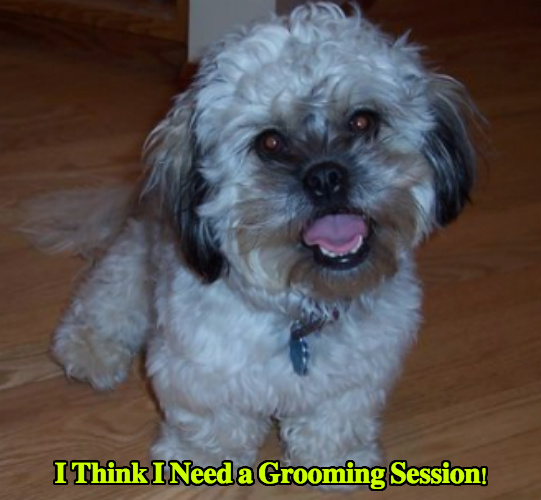
a. Signs that your puppy needs to go
The first step to successful house training is to recognize the signs that your puppy needs to ease itself.
Your puppy may bark, whine, and more often than not, keep turning around when it needs to eliminate. Take it outside immediately.
b. Set a routine
First of all, routines are essential, especially for a dog as stubborn as the Peekapoo. Reminders that it is potty time will help the housebreaking process greatly.
Puppies need to ease themselves when they get up, after meals, and before going to bed. Make sure that you take your new Peekapoo puppy out during those times. Keep bringing it to the spot where it has decided to relieve itself. When training your puppy indoors, keep bringing it to the area where you want it to go.
c. Crate Training
A crate may seem unkind and restrictive. But it is a useful tool for keeping your pet safe. You will need one for taking your Peekapoo out on road trips and for visits to the vet.
Make sure that the crate has enough space for your dog. Your pet should be able to stand, turn, and lie down in it without struggling to make space for itself. Get a small one for your Peekapoo.
When introducing the crate to your dog, leave the door open and put a treat in it. Your dog will understand that it’s a haven and not a threat. It will go in on its own after some cajoling.
d. Paper Training
You will need to train your Peekapoo to use a newspaper or Potty Pad if you live in an apartment where there is limited space.
Put a border around the area where you want your puppy to ease itself and lay newspaper in it. Leave your puppy in the area when it’s time to go potty. Remove a little of the paper at the time once it becomes used to relieving itself there. It will know that it should ease itself in a particular spot.
e. Do’s and Don’ts When Housetraining Your Pet
Do give your pet enough time outside. More ‘outside’ time will prevent housetraining accidents and give your Peekapoo more time to explore.
Do clean up messes with an enzymatic cleaner to minimize odors that will draw your dog back to that spot.
Do use positive reinforcement when training your Peekapoo. Puppies, like children, respond best in happy circumstances.
Do clap loudly when you notice your Peekapoo relieving itself where it shouldn’t. It will know that it is doing something that’s not acceptable. When it eases itself in the right area, give it a treat.
Don’t punish your puppy when it has an accident. Doing so will only teach it to fear you. Never rub your pet’s nose in its mess.
8. Obedience Training for Peekapoos
All dogs should learn basic obedience commands. Simple instructions will keep your pet in check, and in many cases, safe.
Your Peekapoo may take time to train because it can be stubborn. That said, it’s never impossible. Here are five essential commands it should understand.
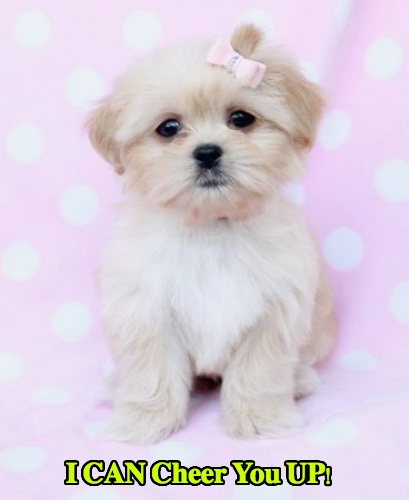
a. Sit
‘Sit’ is the first command that every dog should learn. It can keep your Peekapoo safe in dangerous situations (e.g., a busy street).
Hold a treat before your dog’s nose. Raise your hand. Your dog’s head will follow the goodie, and its bottom will lower. Say ‘Sit’ when it’s in a sitting position. Give it a reward, or affection.
b. Come
‘Come’ too, can rein your mischievous Peekapoo in when necessary, and bring it back to you. This instruction can be a lifesaver when you accidentally leave the front door open.
First, leash your Peekapoo. Then, crouch to its level and say ‘come.’ Stretch your arms open. Give it a treat when it arrives.
c. Down
‘Down’ is a challenging command for a dog to learn because it puts your pet in a submissive position. Positive reinforcement will help the process.
Find a delicious treat and hold it in a clenched fist. Hold your hand up to your pet’s nose. Move your hand to the ground. Slide your clenched fist along the ground so that the dog’s body follows. Say ‘down’ when it’s in this position and give it the treat.
Repeat this daily until your Peekapoo masters the command. If it tries to grab the treat, say ‘no’ and move your hand away. Don’t push your pet, but encourage it to move into the correct position. Remember that recognizing the command takes a little time.
d. Stay
Another command that will keep your dog safe in dangerous situations is ‘stay.’
Your dog must first know how to sit. Get it into a sitting position. Then, stretch out your palm in front of you and say ‘stay.’
Take a few steps backward, and give it the treat if it stays. Gradually increase the distance between yourself and your pet. The goal is for your pet to be able to stay in place even if you go into a different room or location. Always reward it for obeying your instructions, as this is no mean feat for a little dog.
e. Leave it
You will want to teach your Peekapoo some manners when it tries to grab treats or toys. You will also want it to ignore dangerous objects.
Teach your Peekapoo that there are alternatives to the item. First, hold a treat in both hands. Show your pup one fist with the enclosed goodie and say ‘leave it.’
Let the dog keep licking your hand, but ignore the behavior. Give it the treat from the other fist when it moves away from the first one. Your pet will learn that it only gets a reward when it leaves the goodie alone.
9. Nutrition for Peekapoos
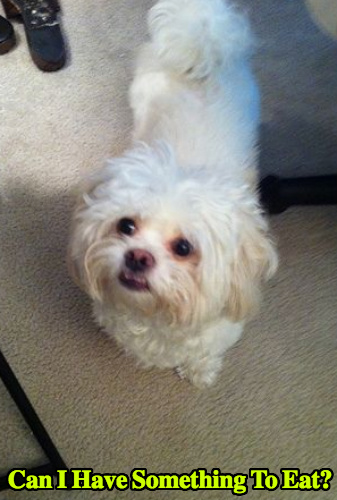
a. A Peekapoo’s Nutritional Needs
Your Peekapoo needs dry foods, which keep its teeth free of tartar. Being a brachycephalic, short-nosed breed means that it is likely to have crowded teeth and periodontal disease. Kibble helps to scrape off plaque and food particles.
Your Peekapoo needs fats for energy as well. They protect and insulate the dog’s organs.
Carbohydrates are a source of energy. They also help to minimize diarrhea.
Proteins maintain muscles and build organs. Look for meat-based protein like fish, beef, turkey, and chicken.
Essential nutrients, such as iron, calcium, and magnesium
Omega-3 fatty acids in foods such as fish
b. The Three Best Foods For The Peekapoo
These three foods will suffice its nutritional needs best.
i. Wellness Pro Natural Grain Free Dry Dog Food
This dry dog food is completely free of grains. It contains essential proteins such as salmon oil, chicken, and turkey. Fruits and vegetables offer the necessary vitamins and minerals.
So, how does this dog food fare? It has high-quality proteins, which support lean muscle building. The Omega-3 fatty acids from the salmon oil give a glossy look to its skin and coat. A host of fortified vitamins and minerals boost its well-being, while carbohydrates provide energy. The one point to note when buying this food is that it may cause your pet to pass soft stools.
ii. Instinct Raw Boost Grain-Free Recipe
This dog food has high protein kibble and freeze-dried chunks of raw food that will give your pet energy. It resembles what a dog would eat in its natural surroundings. Instinct Raw has a small-breed selection.
Instinct Raw is rich in protein, which helps your Peekapoo maintain an ideal weight. It builds lean muscle. The freeze-dried components facilitate digestion. Omega-3 oils offer a healthy skin and coat. Above all, its excellent taste will keep your dog wanting more.
Note that you should feed your pet too much of it if it has a sensitive stomach, as this food does cause diarrhea.
iii. Merrick Grain Free Dog Food
Merrick has actual deboned meat, fish, or poultry as a rich source of protein. The rich proteins allow the development of lean muscles.
The Omega-3 acids enable the growth of a healthy coat, while vitamins and minerals improve the overall health of your dog. Merrick uses ingredients that promote digestion and prevent gastrointestinal problems.
In all, a Peekapoo should have balanced meals. Proper nutrition will save you endless veterinary trips. The nutrients that these foods provide are always beneficial.
10. A Peekapoo’s Frustrating Habits
Like all dogs, your Peekapoo may be prone to a few annoying habits. Here’s what they are, and how to get rid of them.
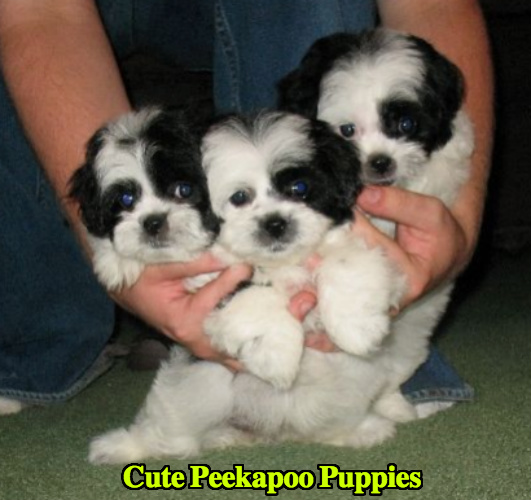
a. Barking
The first habit on this list is barking, which your Peekapoo, owing to its Pekingnese heritage, may find difficult to break.
Some barking is acceptable. A watchful dog that warns you of the presence of strangers is a great help. However, you’ll want to keep it in check if it’s uncontrollable.
To do this, don’t yell over the noise. Adding your two cents worsens the situation. Instead, find out the cause of your pet’s barking. Stress, warning, and requests for food are among the top reasons dogs bark.
b. Jumping
Enthusiastic dogs love to welcome their owners home after a long day. Your Peekapoo may not be as affable but will feel glad that you’re back.
That said, you must contain its excitement. Since your dog’s gesture is loving and well-intentioned, don’t scold it. But you must teach it that jumping isn’t acceptable behavior.
Be consistent with the following response. Don’t greet your Peekapoo at once. Reciprocating it will exacerbate its behavior. Stay calm until your dog becomes quiet. Show it affection once it realizes that it isn’t supposed to go overboard with the jumping.
c. Chasing
Control this behavior because it could lead to a tragic accident. To do so, make sure that your pet knows how to ‘sit,’ ‘stay’ and ‘come.’ You will be able to get it to stay in place.
Dogs chase out of anxiety or restlessness. Giving your pet exercise opportunities will reduce its boredom.
Provide it with chances to run in dog parks. It will also help to microchip your pet with a doggy GPS system.
d. Begging
Your Peekapoo may beg because it wants to eat what you do. To reduce this behavior, don’t encourage it. Even saying ‘no’ is a sign to your pet that it has achieved its goal of getting its way with you. Just ignore it when it comes to the table.
e. Digging
Peekapoos don’t have a propensity for digging but might still do so if left in the yard for too long. Nobody likes to come home to a garden full of ugly holes and patches.
To reduce digging behavior, give your pet a sandbox to dig in and enclose it in the area of the garden where you won’t mind it making a mess.
f. Gulping
Your pet may have been a regular Oliver Twist as a tiny pup. It probably went to its mother for its feeding and demanded ‘more.’
Puppies typically scramble to get a share of their mother’s milk. This behavior carries over into adulthood; dogs rush to eat, thinking that other dogs may steal their food if they don’t.
To reduce gulping, put your pet’s food in bowls that restrict how much and how fast it can eat.
g. Nipping
Nipping may seem adorable but can be worrisome. You won’t want your dog to nip because it can become aggressive.
Yelp when your dog nips. The sound will frighten your puppy and tell it that the behavior is unacceptable. Then, stop interacting with your pet for a while. Repeat this until it learns that it should be gentle during playtime.
h. Aggression
Dogs are aggressive when they are anxious, excited, or overprotective of their owners.
To control this behavior, stay calm in front of other dogs. Always avoid possible confrontations. Give your pet opportunities to socialize, and enroll it in an obedience class.
i. Separation Anxiety
Separation anxiety may strike when a dog is bored or neglected. The dog misses its owner and vents its frustrations by chewing or digging.
Begin by leaving your dog for short periods at a time. Gradually extend the time you spend away from your pet. Play soft music when you are away.
11. Breeding the Peekapoo
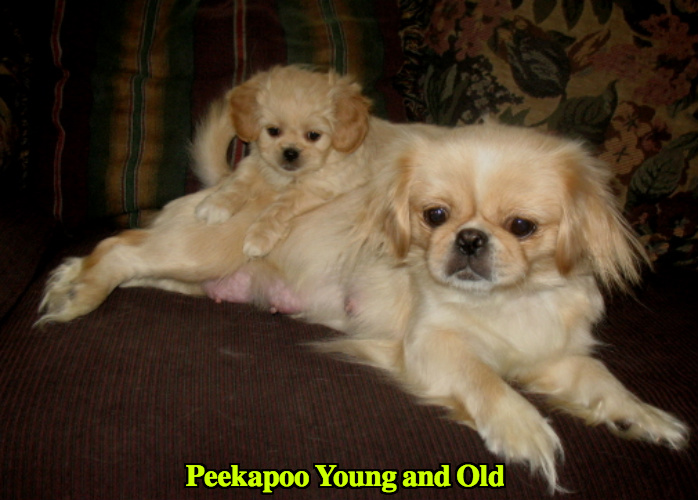
Breeding dogs, especially crossbreeds like the Peekapoo, is challenging. You must consider all details, from selecting a responsible breeder to whelping,
So, you’d want some well-meaning advice if you’re a first-time dog breeder. Here are a few tips.
a. Educate yourself
First of all, educate yourself about the breed. Kennel clubs don’t recognize the Peekapoo as yet, so there is no official breed standard. However, you can find out about the dog’s preferred appearance.
Also, know about intergenerational breeding. First generation Peekapoos are dogs bred from Pekingese and Poodle parents, while second generation dogs are those bred from Peekapoos.
b. Choose a responsible breeder
You can disregard this tip if you are doing the breeding yourself. If you aren’t, choose a responsible breeder to help you with the mating process.
Responsible breeders will know everything about the Peekapoo’s history. He or she will let you meet the dog’s parents and will inform you if they have genetic problems. Furthermore, he or she will ensure that a veterinarian checks them before the breeding starts.
c. Don’t Rush
Don’t rush to breed your female. It should be about two years old and fully vaccinated before you let it mate.
d. Health checks
Have a veterinarian examine the stud (male) and the dam(female) before the mating.
e. Start your search early
Conduct searches and make potential matches long before the breeding begins. Have alternatives ready if the chosen male or female cannot breed.
f. Contracts
Draw up precise agreements. State all terms and obligations, such as how many of the pups the male’s and female’s owners should have.
g. Advertise
Advertise the sale of the puppies before the breeding to let people know that you are planning a litter. You may design a website to let people know that you have puppies available for sale.
h. Testing
Put your female through a progesterone test to determine if she is ready to breed.
i. Whelping Supplies
You should have whelping supplies on hand. These include a thermometer, syringe, disinfectant, and a whelping box.
j. Assistance
Arrange for an experienced dog handler to assist you during the process. This person should be able to come when called.
k. Cash
Have some cash with you in case of emergencies, eg. An unexpected visit by the vet.
12. Games to play with your Peekapoo
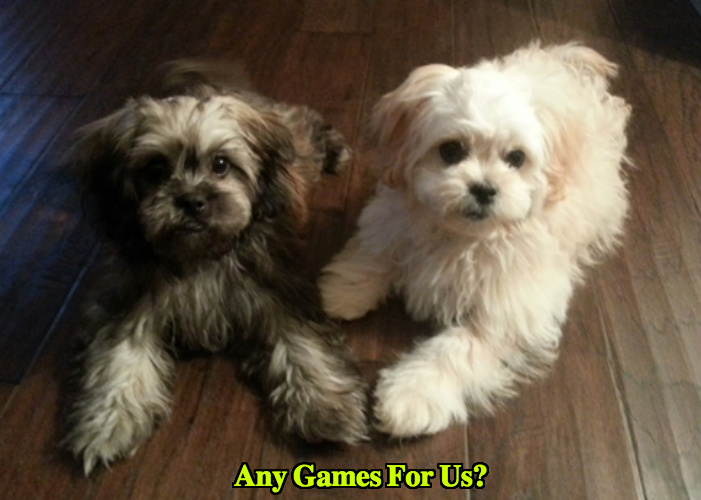
Your Peekapoo is a small lapdog and will enjoy playing sedentary indoor games with you. Here are a few fun games that will help you and your pet while away the time on a rainy day.
a. Hide and Seek, or ‘Peekapoo’
Have someone hold your Peekapoo in another room while you hide. When you are ready, call ‘ Find’ or ‘Peekapoo.’ Get your friend to release the dog. Watch it have fun seeking you out.
b. Find the Treats
This game is a Foodie’s version of the one above. Hide treats all over your home while someone holds your pet in another room. Call ‘find’ when you are ready, and watch your pet ferret out the treats.
c. Tug of War
This game is somewhat controversial, so use your discretion if you choose to play it with your pet. Some pet lovers believe that it promotes aggression, but it will not if you play safely.
Teach your pet to know when it should release the rope and to ‘leave it.’ This way, the dog doesn’t see itself as dominant because it wins.
d. Which Hand
Take a treat and put your hands behind you. Then, look for your Peekapoo. Toss it around and show your hands to your pet. Let guess which one hides the treat.
e. Put Away Your Toys
Playing this game is a way of getting your Peekapoo to clear up after itself. Teach your pet to pick up toys and put them in a toy box. This process requires a bit of reinforcement, so be patient.
f. Learning Toy Names
Dogs have the intelligence of a two-year-old child. The Peekapoo, of course, can learn fast. They value their toys and will learn their names quickly.
Get it to bring you the toy you name from a set of toys. This process may take a lot of reward and reinforcement but will pay off in the end.
g. Kong Toys
When you have no other resource, the Kong Toy always works. Let your Peekapoo grab treats from the Kong.
In conclusion, the Peekapoo is a genteel charmer and can be a joy to own if you train it well. Of course, you should choose one carefully. Proper breeding, nutrition, obedience training, housebreaking, and grooming will make it an ideal companion.
